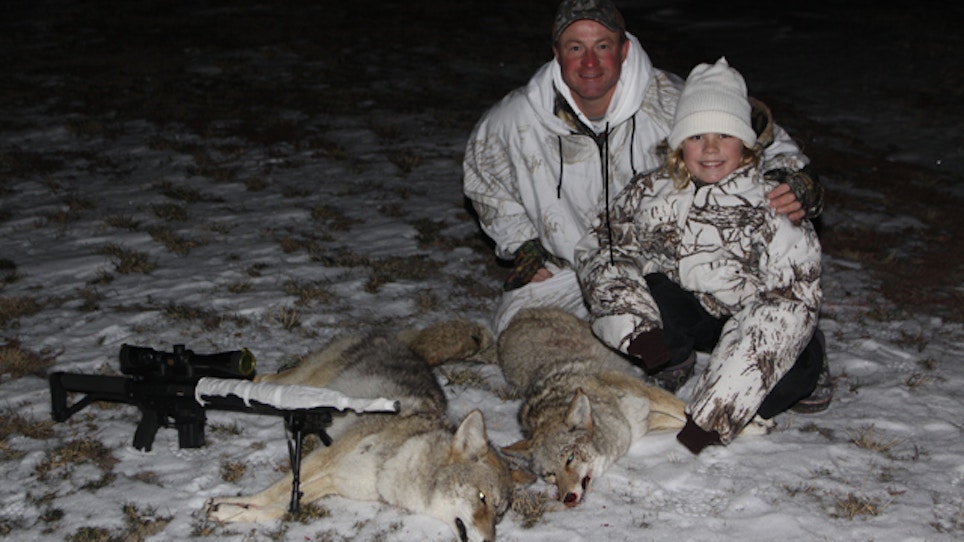As the end of winter nears you may be experiencing difficult times in the coyote calling arena. I know my setup success decreases this time of year and I surmise it is likely from months of coyotes being shot at and the increase in predator hunting participants. If you still hope to tag a coyote or two before the end of winter you may want to try an off-the-wall strategy or step outside of the box. Here are a few to mull over.
Nighttime
Most animals, prey and predator, feel confident and move more during the cover of darkness. Check your state game regulations and if legal, consider a nighttime coyote caper. The United States is experiencing ample snow cover and this provides ideal conditions for a night hunt, especially if you don't have night-vision equipment. Watch the forecast and look for a clear night with a bright moon. Now sneak into the edge of an open field covered in snow and begin calling. You may want to tote a shotgun as you never know when an overconfident coyote could run you over on a tranquil winter evening.
Ambush Funnels
If your calls are failing worse than the current crew in Congress, scout for funnels displaying fresh coyote tracks and droppings. Now look for a high point to watch these locations at dawn and dusk. You may just catch a coyote sneaking by as it goes about its daily business. Areas I've watched in the past include rivers, creeks, wetland edges, weedy fence lines and tight canyons, particularly those that connect to prime hunting or bedding cover. As livestock owners begin calving these funnels in and around cattle herds can be coyote gold mines.
Handheld Inflection
Yes I know that digital callers rule, but sometimes you just can't get the same inflection from a stereo speaker as you can from a handheld call. Your lungs are amazing and they allow you to force small volumes or air or gusts of wind to change the tone of a handheld call. If you use a diaphragm call (www.primos.com) you can go from howls, to yips to predator squalls, all with your desired inflection. This "real" sound can sometimes be the spark to lure in a hesitant coyote and it has added value in the fact you can change the tone, and volume conveniently while watching a coyote close the distance. Don't overlook the value of handheld calls when calling gets tough.
Go Thick
Lastly, don't ignore the thick stuff. Coyotes feel invincible in thick cover so why not take advantage of their overconfident zeal? Look for thick cover that has small openings providing you shooting lanes. More importantly, look for a setting with terrain that blocks a backdoor, downwind sneak attack. This means you'll want to set up with a steep bluff, deep canyon, river or other feature that would impede coyotes from circling downwind. If the ruse works a coyote will pop out of thick cover and give you a shotgun ending to your hunt.






